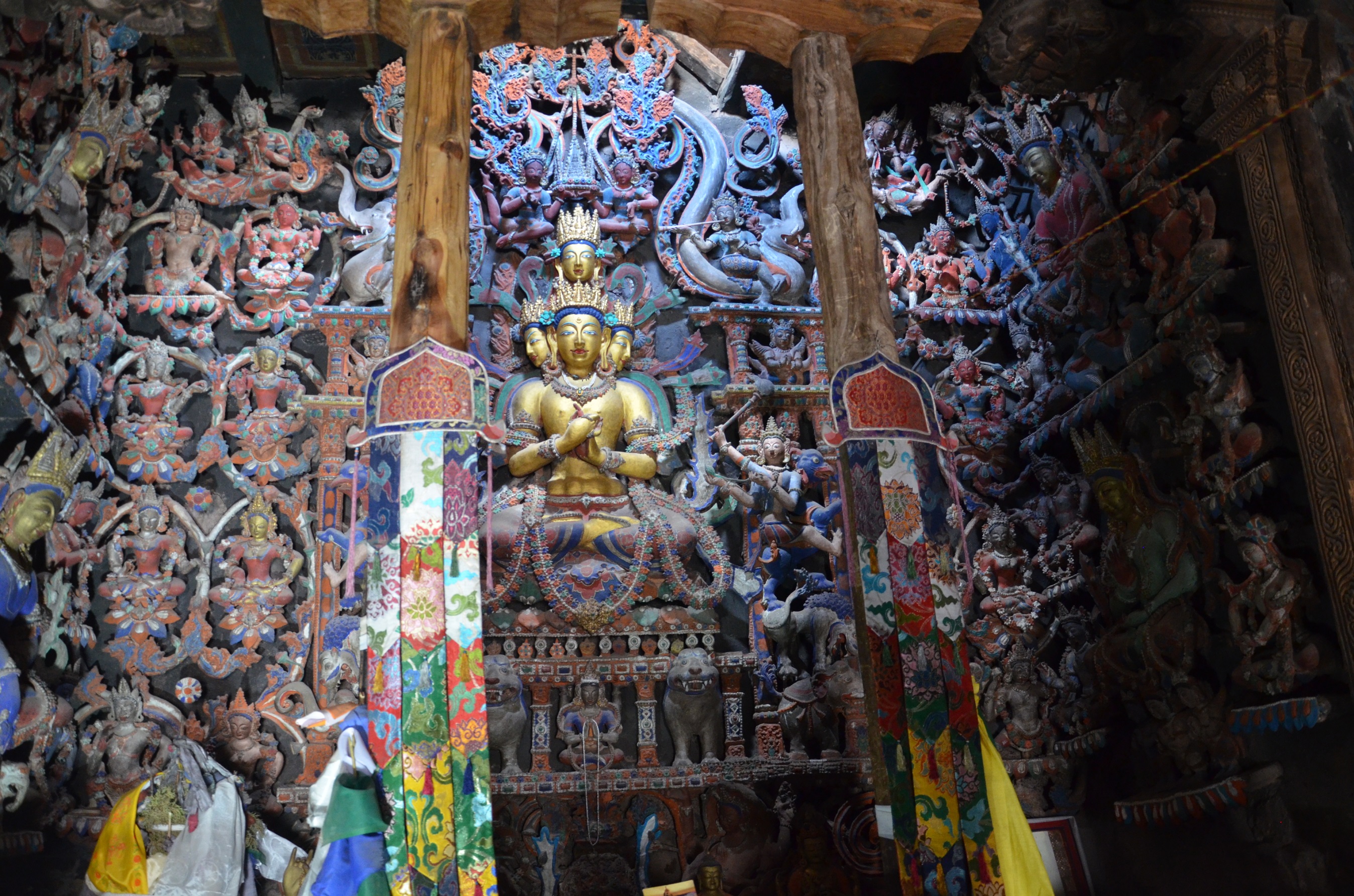B e l l i n i C. (in print). Some Pieces of the Puzzle: The Restoration of the Alchi gSum brtsegs by bKra shis rNam rgyal and Other Considerations.
De n w o o d P. 2015. The Dating of the Sumtsek Temple at Alchi. In E. Lo Bue and J. Bray (eds.), Art and Architecture in Ladakh. Cross-Cultural Transmissions in the Himalayas and Karakorum. Leiden – Boston, 159–166.
F r a n c k e A. H. 2014. Antiquities of Indian Tibet. Vol. 1 Personal Narrative. Archaeological Survey of India. Calcutta (reprint 1994 Archaeological Survey of India. New Delhi).
G o e p p e r R. 1990. Clues for the Dating of the Three-storeyed Temple (Sumtsek) in Alchi, Ladakh. In Asiatische Studien: Zeitschrift der Schweizerischen Gesellschaft für Asienkunde 44 (2), 159–175.
v a n Ha m P. 2011. Ladakh’s Missing Link? The Murals of Tragkhung Kowache. In Orientations 42 (5). Hong Kong, 50–57.
J a h o d a C. 2006. Bemerkungen zur Tradition einer weiblichen Schutzgottheit (srung ma) in Tabo (Spiti Tal, Himachal Pradesh, Indien). In A. Gingrich and H. Guntram (eds.), Der Rand und die Mitte: Beiträge zur Sozialanthropologie und Kulturgeschichte Tibets und des Himalaya. Vienna, 11–54.
K a l a n t a r i C. 2010. Courtly Cavaliers, Mounted Heroes and Pehar. In E. Lo Bue and C. Luczanits (eds.), Tibetan Art and Architecture in Context, Tibetan Studies: Proceedings of the Eleventh Seminar of the International Association for Tibetan Studies held at Koenigswinter 2006. Halle/Saale, 75–120.
K o z i c z G. 2008–2009. From Mainamati to Nyarma: Remarks on the Development from Cruciform to Oblong-shaped Temple Lay-outs. Journal of Bengal Art 13&14. Dhaka, 9–21.
K o z i c z G. 2010. The Architectural Matrix of the Alchi Sumtsek. Indo-Asiatische Zeitschrift 14. Berlin, 31–41.
K o z i c z G. 2014. The Tsugla Khang of Tabo and the Three-dimensionality of the Vajradhatu Mandala. In P. van Ham (ed.), Tabo – Gods of Light. Munich, 71–75.
L o b s a n g Z o t p a. Rin.chen bzang.po’i rnam.thar.
L u c z a n i t s C. 2003. Art-historical Aspects of Dating. In I. Kreide-Damani (ed.), Dating Tibetan Art. Wiesbaden.
d e Ne b e s k y -Wo j k o w i t z R. 1956. Oracles and Demons of Tibet. The Cult and Iconography of Tibetan Protective Deities. The Hague (reprint Kathmandu 1993).
S h a k s p o N. T. 2012. A Cultural History of Ladakh. Centre for Research on Ladakh. Sabu-Leh.
S n e l l g r o v e D. and S k o r u p s k i T. 1980. The Cultural Heritage of Ladakh II: Zangskar and the Cave Temples of Ladakh. Warminster.
V i t a l i R. 1999. Records of Tho.ling: A Literary and Visual Reconstruction of the “Mother” Monastery in Gu.ge. Dharamshala.
Google Scholar


